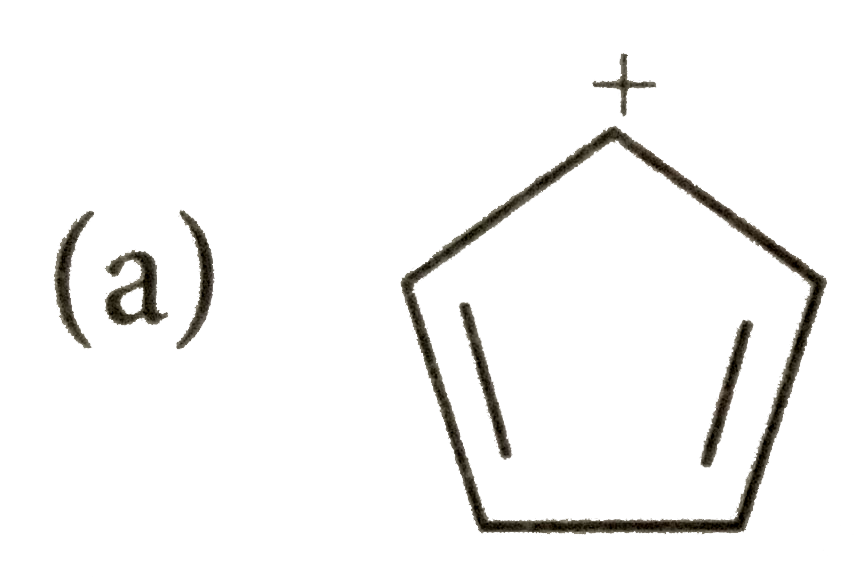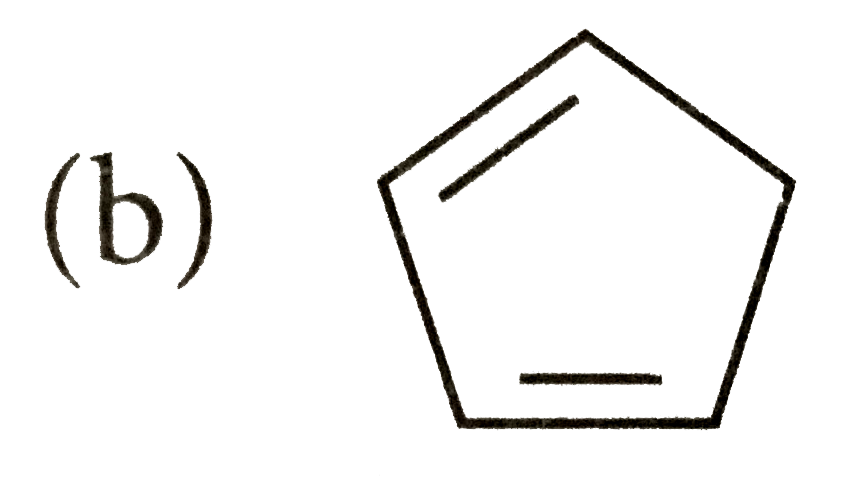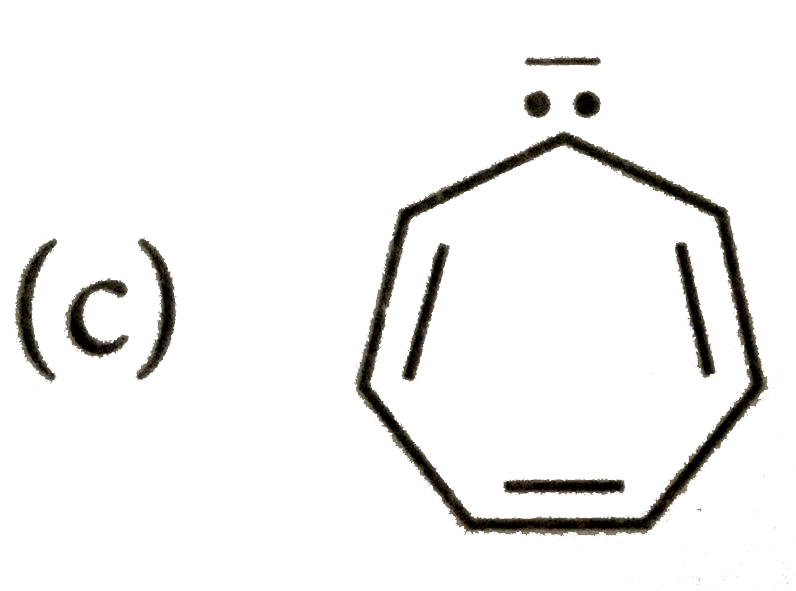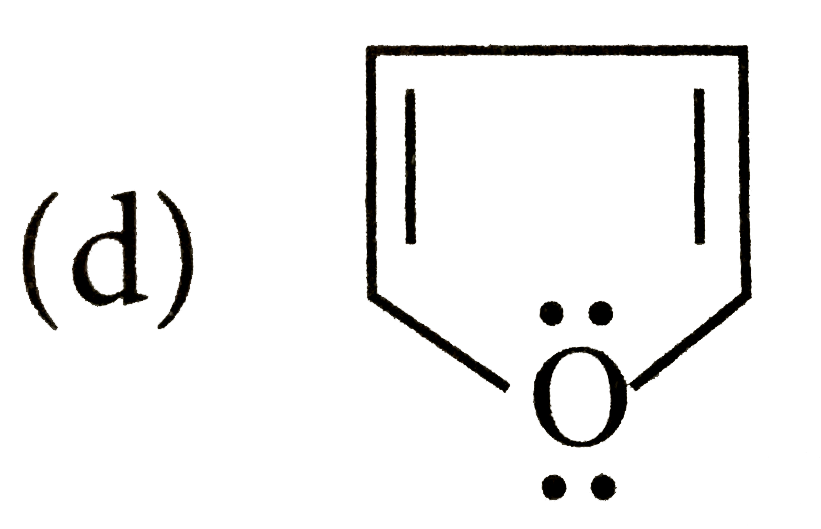Which of the following species is /are superoctet molecule ?
AlF3
SiCl4
XeF2
ICl3
The correct Answer is:C, D
To determine which of the following species are superoctet molecules, we need to identify species that have more than eight electrons in their valence shell. Let's analyze each species step by step.
Step 1: Analyze AlF3
1. Identify the central atom: Aluminium (Al).
2. Determine the valence electrons of Al: Aluminium is in group 13, so it has 3 valence electrons.
3. Identify the surrounding atoms: There are 3 fluorine (F) atoms.
4. Determine the valence electrons of F: Each fluorine atom has 7 valence electrons.
5. Calculate the total number of valence electrons:
- Al: 3 electrons
- 3 F: 3 x 7 = 21 electrons
- Total = 3 + 21 = 24 electrons
6. Distribute the electrons: The structure has Al at the center with three F atoms bonded to it. Each bond uses 2 electrons, so:
- 3 bonds = 6 electrons used
- Remaining electrons = 24 - 6 = 18 electrons.
7. Count the electrons around Al: Al has 6 electrons around it (from the bonds with F), which is not more than 8.
8. Conclusion: AlF3 is not a superoctet molecule.
Step 2: Analyze SiCl4
1. Identify the central atom: Silicon (Si).
2. Determine the valence electrons of Si: Silicon is in group 14, so it has 4 valence electrons.
3. Identify the surrounding atoms: There are 4 chlorine (Cl) atoms.
4. Determine the valence electrons of Cl: Each chlorine atom has 7 valence electrons.
5. Calculate the total number of valence electrons:
- Si: 4 electrons
- 4 Cl: 4 x 7 = 28 electrons
- Total = 4 + 28 = 32 electrons.
6. Distribute the electrons: The structure has Si at the center with four Cl atoms bonded to it. Each bond uses 2 electrons, so:
- 4 bonds = 8 electrons used
- Remaining electrons = 32 - 8 = 24 electrons.
7. Count the electrons around Si: Si has 8 electrons around it (from the bonds with Cl), which is exactly 8.
8. Conclusion: SiCl4 is not a superoctet molecule.
Step 3: Analyze XeF2
1. Identify the central atom: Xenon (Xe).
2. Determine the valence electrons of Xe: Xenon is in group 18, so it has 8 valence electrons.
3. Identify the surrounding atoms: There are 2 fluorine (F) atoms.
4. Determine the valence electrons of F: Each fluorine atom has 7 valence electrons.
5. Calculate the total number of valence electrons:
- Xe: 8 electrons
- 2 F: 2 x 7 = 14 electrons
- Total = 8 + 14 = 22 electrons.
6. Distribute the electrons: The structure has Xe at the center with two F atoms bonded to it. Each bond uses 2 electrons, so:
- 2 bonds = 4 electrons used
- Remaining electrons = 22 - 4 = 18 electrons.
7. Count the electrons around Xe: Xe has 4 electrons from the bonds with F and 4 lone pairs (8 electrons), totaling 10 electrons.
8. Conclusion: XeF2 is a superoctet molecule.
Step 4: Analyze ICl3
1. Identify the central atom: Iodine (I).
2. Determine the valence electrons of I: Iodine is in group 17, so it has 7 valence electrons.
3. Identify the surrounding atoms: There are 3 chlorine (Cl) atoms.
4. Determine the valence electrons of Cl: Each chlorine atom has 7 valence electrons.
5. Calculate the total number of valence electrons:
- I: 7 electrons
- 3 Cl: 3 x 7 = 21 electrons
- Total = 7 + 21 = 28 electrons.
6. Distribute the electrons: The structure has I at the center with three Cl atoms bonded to it. Each bond uses 2 electrons, so:
- 3 bonds = 6 electrons used
- Remaining electrons = 28 - 6 = 22 electrons.
7. Count the electrons around I: I has 6 electrons from the bonds with Cl and 4 lone pairs (8 electrons), totaling 10 electrons.
8. Conclusion: ICl3 is a superoctet molecule.
Final Conclusion
The species that are superoctet molecules are XeF2 and ICl3.
1. Identify the central atom: Aluminium (Al).
2. Determine the valence electrons of Al: Aluminium is in group 13, so it has 3 valence electrons.
3. Identify the surrounding atoms: There are 3 fluorine (F) atoms.
4. Determine the valence electrons of F: Each fluorine atom has 7 valence electrons.
5. Calculate the total number of valence electrons:
- Al: 3 electrons
- 3 F: 3 x 7 = 21 electrons
- Total = 3 + 21 = 24 electrons
6. Distribute the electrons: The structure has Al at the center with three F atoms bonded to it. Each bond uses 2 electrons, so:
- 3 bonds = 6 electrons used
- Remaining electrons = 24 - 6 = 18 electrons.
7. Count the electrons around Al: Al has 6 electrons around it (from the bonds with F), which is not more than 8.
8. Conclusion: AlF3 is not a superoctet molecule.
1. Identify the central atom: Silicon (Si).
2. Determine the valence electrons of Si: Silicon is in group 14, so it has 4 valence electrons.
3. Identify the surrounding atoms: There are 4 chlorine (Cl) atoms.
4. Determine the valence electrons of Cl: Each chlorine atom has 7 valence electrons.
5. Calculate the total number of valence electrons:
- Si: 4 electrons
- 4 Cl: 4 x 7 = 28 electrons
- Total = 4 + 28 = 32 electrons.
6. Distribute the electrons: The structure has Si at the center with four Cl atoms bonded to it. Each bond uses 2 electrons, so:
- 4 bonds = 8 electrons used
- Remaining electrons = 32 - 8 = 24 electrons.
7. Count the electrons around Si: Si has 8 electrons around it (from the bonds with Cl), which is exactly 8.
8. Conclusion: SiCl4 is not a superoctet molecule.
1. Identify the central atom: Xenon (Xe).
2. Determine the valence electrons of Xe: Xenon is in group 18, so it has 8 valence electrons.
3. Identify the surrounding atoms: There are 2 fluorine (F) atoms.
4. Determine the valence electrons of F: Each fluorine atom has 7 valence electrons.
5. Calculate the total number of valence electrons:
- Xe: 8 electrons
- 2 F: 2 x 7 = 14 electrons
- Total = 8 + 14 = 22 electrons.
6. Distribute the electrons: The structure has Xe at the center with two F atoms bonded to it. Each bond uses 2 electrons, so:
- 2 bonds = 4 electrons used
- Remaining electrons = 22 - 4 = 18 electrons.
7. Count the electrons around Xe: Xe has 4 electrons from the bonds with F and 4 lone pairs (8 electrons), totaling 10 electrons.
8. Conclusion: XeF2 is a superoctet molecule.
1. Identify the central atom: Iodine (I).
2. Determine the valence electrons of I: Iodine is in group 17, so it has 7 valence electrons.
3. Identify the surrounding atoms: There are 3 chlorine (Cl) atoms.
4. Determine the valence electrons of Cl: Each chlorine atom has 7 valence electrons.
5. Calculate the total number of valence electrons:
- I: 7 electrons
- 3 Cl: 3 x 7 = 21 electrons
- Total = 7 + 21 = 28 electrons.
6. Distribute the electrons: The structure has I at the center with three Cl atoms bonded to it. Each bond uses 2 electrons, so:
- 3 bonds = 6 electrons used
- Remaining electrons = 28 - 6 = 22 electrons.
7. Count the electrons around I: I has 6 electrons from the bonds with Cl and 4 lone pairs (8 electrons), totaling 10 electrons.
8. Conclusion: ICl3 is a superoctet molecule.
The species that are superoctet molecules are XeF2 and ICl3.
Topper's Solved these Questions
- CHEMICAL BONDING (BASIC)BOOK - VK JAISWAL ENGLISHCHAPTER - CHEMICAL BONDING (BASIC)EXERCISE - MATCH THE COLUMN
26 Videos
- CHEMICAL BONDING (BASIC)BOOK - VK JAISWAL ENGLISHCHAPTER - CHEMICAL BONDING (BASIC)EXERCISE - ASSERTION-REASON TYPE QUESTIONS
23 Videos
- CHEMICAL BONDING (BASIC)BOOK - VK JAISWAL ENGLISHCHAPTER - CHEMICAL BONDING (BASIC)EXERCISE - Level 3 (Passive 12)
4 Videos
- CHEMICAL BONDING (ADVANCED)BOOK - VK JAISWAL ENGLISHCHAPTER - CHEMICAL BONDING (ADVANCED)EXERCISE - SUBJECTIVE PROBLEMS
64 Videos
- CO-ORDINATION COMPOUNDSBOOK - VK JAISWAL ENGLISHCHAPTER - CO-ORDINATION COMPOUNDSEXERCISE - LEVEL 2
144 Videos
Similar Questions
Knowledge Check
Which of the following species is a carbene?
A:CH−3B:CCl2CCH2=C=ODR−⋅CH−RWhich of the following species is aromatic?
A B
B C
C D
D
Which of the following species is not stable?
A[Sn(OH)6]2−B[SiCl6]2−C[SiF6]2−D[GeCl6]2−
